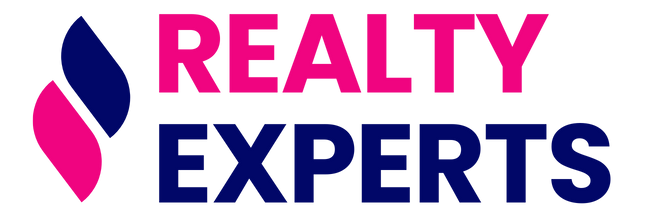Unlocking Career Growth: Strategies, Examples, and Practical Guidance for Advancing Your Professional Path

Photo by Fotos on Unsplash
Understanding Career Growth: More Than Just Promotions
Career growth is the ongoing process of improving your skills, knowledge, and experience to move toward your professional ambitions. While many equate it simply with promotions or pay increases, true career growth encompasses a much broader journey. It is about expanding your role, taking on new responsibilities, and ultimately achieving personal fulfillment at work [4] . This journey is unique to each individual, involving a mix of formal advancement, skill building, and self-discovery.
Career Growth vs. Career Development: Key Differences
Although often used interchangeably, career growth and career development have distinct meanings.
Career growth
refers to the broader, long-term trajectory of your professional life-the overall path you’ll take to reach your goals.
Career development
is focused on the short-term steps and activities that support progression, such as training sessions, certifications, or new projects within your current role
[5]
. Understanding this distinction helps you set both immediate objectives and long-term ambitions.
Why Career Growth Matters
Investing in your career growth brings tangible and intangible benefits:
-
Increased opportunities.
Gaining new skills and experience opens doors to higher-level positions, lateral moves, or entirely new career paths [2] . -
Job satisfaction.
When you align your work with your values and strengths, your sense of fulfillment at work increases [4] . -
Resilience and adaptability.
Continuous growth helps you stay relevant in a changing job market and prepares you for new challenges [1] . -
Recognition and compensation.
Employees who invest in growth are often rewarded with raises, promotions, or new projects [3] .
Core Elements of Career Growth
Career growth typically involves key milestones and ongoing activities. Here are the major components:
1. Skill Development
Enhancing both
soft skills
(like communication, leadership, and problem-solving) and
hard skills
(technical abilities specific to your field) is essential. For example, a software engineer may learn a new programming language, while a manager could improve their negotiation skills. Many employers offer training programs, but you can also pursue independent learning through online courses, workshops, or certifications
[3]
.
Action Step:
Identify one skill that would make you more effective in your current role or prepare you for your next step. Research reputable course providers or professional organizations for relevant training options.
2. Gaining Experience and Taking on Responsibility
Exposure to new tasks or cross-functional projects broadens your perspective and builds your resume. Examples include volunteering for a committee, leading a special project, or working with teams from other departments. Even if these opportunities do not come with an immediate promotion, they offer invaluable learning and can position you for future advancement [4] .
Action Step:
Speak with your manager about your interest in new responsibilities or seek out cross-departmental projects within your organization.
3. Pursuing Promotions or New Roles
One of the most visible forms of career growth is moving into a higher position or a different role. This can happen internally through promotions or externally by changing employers. Some organizations have clear advancement paths, while others require more proactive networking and self-advocacy [5] .
Action Step:
Review your organization’s career ladder or job boards. Update your resume and LinkedIn profile to reflect your most recent achievements, and consider connecting with mentors or professional networks for advice.
4. Professional Development
This encompasses ongoing learning-attending industry conferences, obtaining certifications, or keeping up with trends. Professional development can be formal, such as enrolling in degree programs, or informal, like joining a peer group or reading industry publications. Many employers support professional development by offering tuition reimbursement or paid training days [2] .
Action Step:
Inquire about your employer’s professional development policies or search for local and online professional associations relevant to your field.

Photo by Jodie Cook on Unsplash
5. Achieving Personal Fulfillment
For some, career growth is measured not just by titles or salary but by how meaningful and satisfying their work feels. This can involve finding roles that align with your personal values, mission, or desired lifestyle [4] .
Action Step:
Reflect on what gives you purpose in your work. Consider talking to a career coach or mentor to help clarify your goals.
Examples of Career Growth in Action
Consider these real-world illustrations:
-
Entry-Level to Management:
An administrative assistant takes on project coordination tasks, earns a project management certification, and is promoted to office manager within three years. -
Cross-Functional Experience:
A marketing specialist joins a company-wide innovation task force, learns about product development, and transitions to a product manager role. -
Continuous Learning:
An IT specialist keeps up with evolving cybersecurity trends through online courses and eventually becomes the organization’s lead cybersecurity analyst.
Practical Steps for Advancing Your Career
Career growth is not automatic; it requires planning, effort, and adaptability. Here is a step-by-step approach:
-
Set Clear Goals:
Define your long-term ambitions and the skills or experiences needed to achieve them. Use frameworks like SMART (Specific, Measurable, Achievable, Relevant, Time-bound) goals for clarity. -
Assess Your Current Position:
Evaluate your existing skills, strengths, and areas for improvement. Seek feedback from supervisors or colleagues. -
Develop a Learning Plan:
Identify relevant courses, certifications, or experiences. Use trusted sites such as LinkedIn Learning, Coursera, or industry-specific organizations for reputable training options. -
Build Your Network:
Join professional associations, attend industry events, or reach out to potential mentors. Networking can lead to new opportunities and insights about your field. -
Track Progress and Adjust:
Regularly review your goals and progress. Be open to adjusting your plan as your interests or the job market evolve.
Overcoming Common Challenges
Common obstacles to career growth include lack of clear opportunities, limited resources for development, or uncertainty about career direction. Here are ways to address these challenges:
-
If opportunities are limited in your current organization,
consider seeking cross-functional projects or roles in other departments. If necessary, look externally for organizations with more robust development programs. -
If resources are scarce,
explore free or low-cost online learning platforms, public library resources, or local workshops. -
If you lack direction,
seek career counseling, mentorship, or informational interviews with professionals in fields of interest. Many universities offer career services even to alumni.
Alternative Pathways to Career Growth
Career growth does not always follow a linear path. Consider these alternatives:
-
Lateral Moves:
Moving to a different role at the same level can build new skills and prepare you for future advancement. -
Self-Employment or Entrepreneurship:
Starting your own business or consulting practice can offer control over your growth trajectory. -
Portfolio Careers:
Combining multiple part-time roles or freelance projects allows for diverse skill development and flexibility.
How to Access Career Growth Resources
Many resources for career growth are available through employers, professional associations, educational institutions, and online platforms. To get started, you can:
- Speak with your manager or HR department about available training or development programs.
- Search for professional associations in your industry-these groups often offer job boards, mentorship, and training resources.
- Explore online learning platforms for courses relevant to your goals. When selecting courses, verify the legitimacy of the provider and ensure the content aligns with your needs.
- Utilize local libraries, workforce development centers, or community colleges, which may offer free or affordable workshops.
If you are interested in government-supported programs, visit the official website of your country’s labor or workforce development agency and search for “career development” or “workforce training.” In the U.S., the Department of Labor’s CareerOneStop is a reputable resource for exploring careers, finding training, and locating local help centers.
Summary and Next Steps
Career growth is a dynamic, lifelong process that requires self-assessment, proactive development, and adaptability. By investing in skill development, seeking new experiences, and setting clear goals, you can chart a path toward both professional achievement and personal fulfillment. If you are unsure where to start, consider reaching out to a career counselor, joining a professional association, or participating in a workshop relevant to your industry. Remember, every career journey is unique-embrace continuous learning and remain open to new opportunities as they arise.
References
- [1] Everhour Blog (2024). Professional Growth: Key Strategies & Trends for Career Development.
- [2] Indeed (2025). What Is Professional Development? Definition and Examples.
- [3] University of Minnesota (2024). 6 Reasons Professional Development Is Important for Career Growth.
- [4] Workforce Edge (2024). What Is Career Growth for Employees?
- [5] Dovetail (2024). What is Career Growth? Definition, Benefits, and Examples.
MORE FROM realtyexperts.ai













